Hormuz Portuguese Castle, Iran's Colonial History
Amidst the rich heritage of Hormuz Island, stands the remarkable Hormuz Portuguese Castle.
Dating back to the Safavid era, this fortress stands as a testament to the island's tumultuous past. Originally constructed by Portuguese colonists, the castle served as a military stronghold and residential quarters during their occupation of the region. Today, it stands proudly on the northern shores of Hormuz Island, inviting visitors to explore its storied halls and learn about its pivotal role in shaping the island's history.
Historical Significance of Hormuz Portuguese Castle
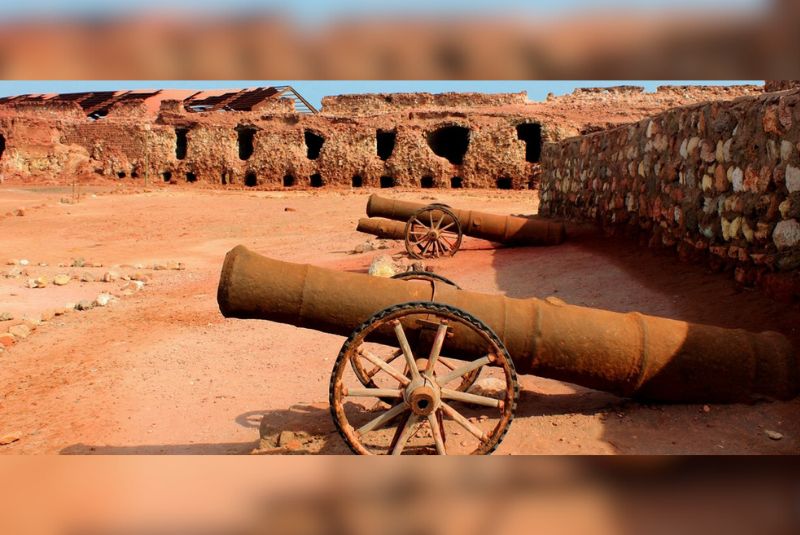
Perched on the northern coastline of Hormuz Island, overlooking the picturesque Persian Gulf, lies the venerable Hormuz Portuguese Castle. This imposing fortress commands attention with its strategic positioning, offering sweeping views of the azure waters that have witnessed centuries of maritime history. Surrounded by rugged terrain and bordered by the shimmering sea, the castle stands as a sentinel of the island's past.
Constructed during the Safavid era, the Hormuz Portuguese Castle bears witness to a pivotal chapter in the island's history. Originally built by Portuguese sailors under the command of Afonso de Albuquerque, the fortress served as a formidable stronghold during their colonial rule. Its robust architecture and strategic location made it a key bastion in the Portuguese empire's expansion into the Persian Gulf.
The castle's historical importance extends beyond its role in maritime defense. As a symbol of colonial power and resistance, it embodies the struggle for control over Hormuz Island and its strategic resources. Over the centuries, the fortress has witnessed sieges, battles, and conquests, shaping the island's destiny and leaving an indelible mark on its landscape. Today, Hormuz Portuguese Castle stands as a testament to the resilience of the island's people and the enduring legacy of its turbulent past.
| Related: Hormuz Salt Goddess Cave + Photos
Hormuz Portuguese Castle Architecture
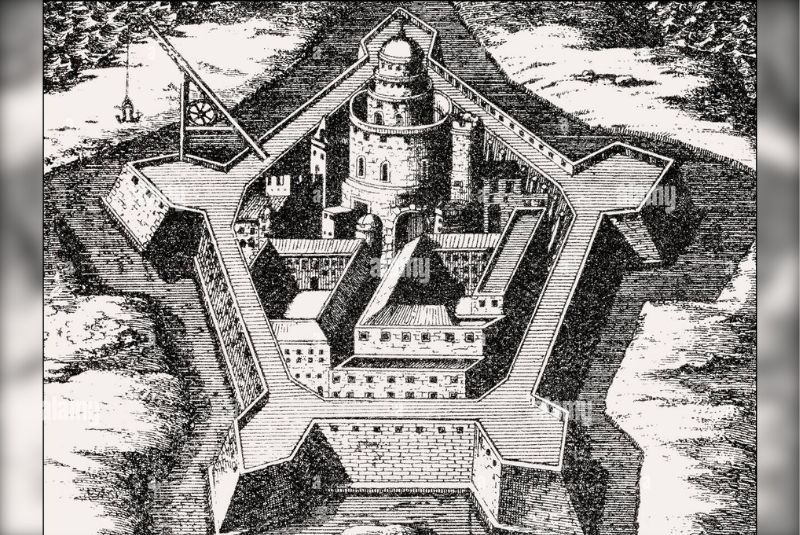
The Hormuz Portuguese Castle stands as a magnificent example of architectural prowess, blending European medieval fortifications with distinct Persian influences. Its imposing presence, characterized by thick walls and towering turrets, showcases the strategic foresight of its builders. Constructed in an irregular polygonal layout, the castle's design incorporates elements of both military defense and residential accommodation.
The castle's architectural features include sturdy walls, measuring up to 14 meters in height and adorned with defensive battlements. These fortifications were designed to withstand attacks and provide refuge for soldiers and residents alike. The castle's towers, reaching heights of 12 meters, offered vantage points for surveillance and defense against potential threats.
Within the castle's expansive grounds, various parts serve specific functions to support its operation. The semi-circular courtyard serves as a central gathering area, housing two ancient cannons that bear witness to the castle's military history. Surrounding the courtyard are barracks for soldiers, storage rooms for provisions, and a command headquarters for strategic planning and coordination.
One of the most intriguing features of the Hormuz Portuguese Castle is its underground church, a testament to the religious and cultural influences of its builders. Originally constructed as a place of worship, the church features stone columns and arched ceilings, reflecting a fusion of European and Iranian architectural styles. Over time, the church was repurposed as a water reservoir, highlighting the adaptive nature of the castle's design to meet changing needs.
Other notable parts of the castle include a large reservoir for storing water, essential for sustaining life on the arid island of Hormuz. Additionally, the castle houses a prison, a dungeon, and accommodation rooms with distinct crescent-shaped roofs. Each part of the castle served a vital role in supporting the daily life and defense of its inhabitants.
Throughout its history, Hormuz Island Portuguese Castle has witnessed significant events, from its construction during the Safavid era to its eventual conquest by Iranian forces. Today, it stands as a symbol of resilience and cultural exchange, attracting visitors from around the world to marvel at its architectural grandeur and rich historical significance.
| Related: Hormuz Portuguese Castle
Exploration and Access to Hormuz Portuguese Castle
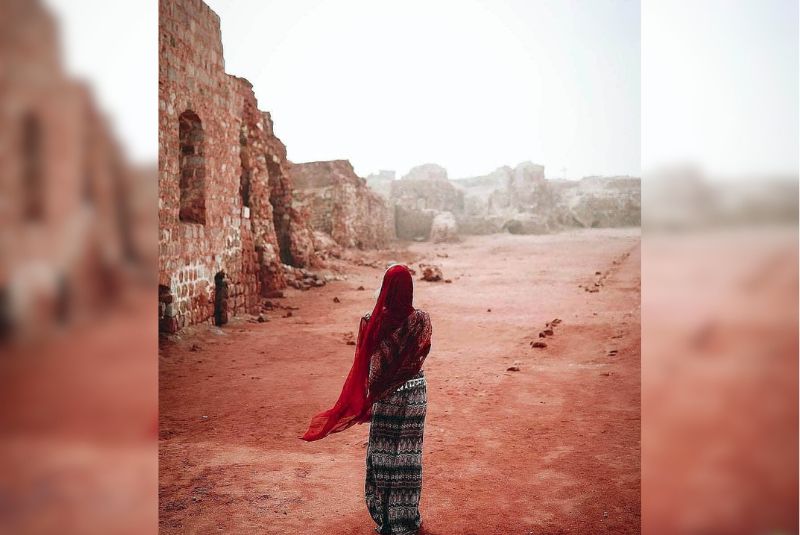
Reaching the Portuguese Castle on Hormuz Island involves a journey that promises both adventure and historical discovery. The island is accessible via various modes of transportation, primarily by sea. Travelers can embark on a ferry ride from Bandar Abbas or Qeshm Island, with the latter offering more frequent departures. Additionally, flights to Bandar Abbas followed by a short ferry ride to Hormuz Island are available for those seeking a faster route.
Once on Hormuz Island, accessing the Portuguese Castle is relatively straightforward. From the main pier on the island's coast, visitors can embark on a scenic stroll northward, covering a distance of approximately one kilometer. Alternatively, tricycles are available for rent for those preferring a quicker mode of transportation. The castle's strategic location on the northern side of the island offers picturesque views of the azure Persian Gulf, adding to the allure of the journey.
Practical tips can enhance the exploration experience for visitors eager to uncover the secrets of the Portuguese Castle on Hormuz Island. Given the island's sunny climate, it is advisable to come prepared with essentials such as sunscreen, sunglasses, and a hat to shield against the sun's rays. Comfortable walking shoes are recommended for traversing the castle grounds, which may include uneven terrain and steep paths.
For enthusiasts keen on capturing the castle's architectural marvels and panoramic vistas, a camera or smartphone with ample storage is essential. Explorers with a penchant for history may benefit from researching the castle's historical significance prior to their visit, enriching their understanding of its role in shaping the island's past.
By equipping oneself with the necessary gear and knowledge, visitors can embark on an unforgettable journey to the Portuguese Castle on Hormuz Island, immersing themselves in centuries of history and heritage amidst breathtaking natural beauty.
| Related: Rainbow Valley on Hormuz + Photos
History and Cultural Significance of Hormuz Portuguese Castle
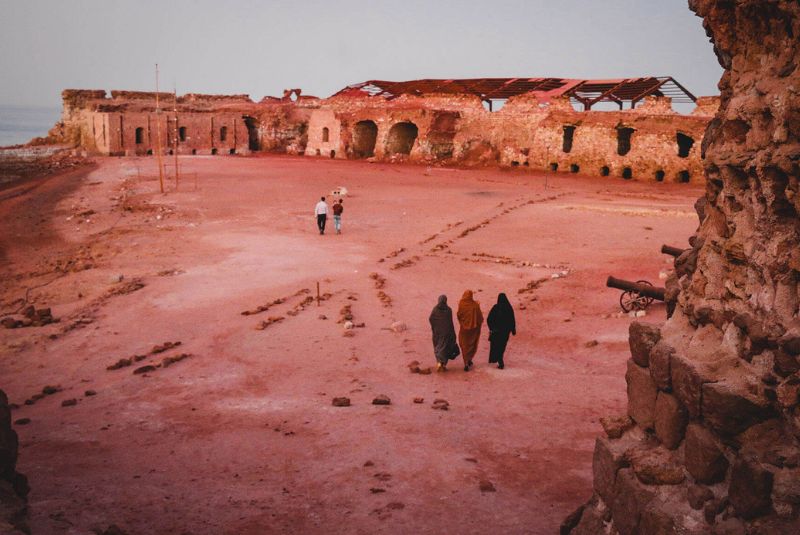
The history of Hormuz Portuguese Castle is deeply intertwined with the island's rich tapestry of conquests, conflicts, and cultural exchanges. Constructed during the Safavid era, the castle stands as a testament to the strategic importance of Hormuz Island in the Persian Gulf region. Its origins trace back to the 16th century when Portuguese sailors, led by Afonso de Albuquerque, erected the fortress to solidify their presence along the southern coast of Iran. The fortress served as both a military stronghold and a residential enclave for Portuguese colonists and their families.
The construction of the Portuguese Castle at Hormuz Island marked a pivotal moment in the island's history, ushering in an era of foreign occupation and influence. Its formidable walls and towering towers bore witness to centuries of maritime trade and geopolitical maneuvering in the Persian Gulf. However, the castle's dominance was short-lived, as it fell into the hands of Safavid forces under Shah Abbas I in 1622 AD, marking the end of Portuguese rule in the region.
The conquest of Hormuz Portuguese Castle by Shah Abbas I symbolized the resurgence of Iranian sovereignty and the expulsion of foreign powers from Persian territories. The castle's capture not only liberated Hormuz Island from Portuguese control but also heralded a new chapter in the island's cultural evolution. Over the centuries, the fortress has served as a poignant reminder of Iran's resilience and determination to safeguard its territorial integrity.
Beyond its military significance, Hormuz Portuguese Castle holds immense cultural value as a symbol of Iran's enduring heritage. The castle's architectural design reflects a fusion of European medieval fortresses and indigenous Iranian styles, showcasing the cross-cultural exchanges that have shaped the region's identity. Today, the castle stands as a revered historical site, drawing visitors from around the world to explore its storied past and contemplate its enduring legacy in the Persian Gulf.
| Suggestion: The Most Beautiful and Historical Castles in Iran
Best Time to Visit Hormuz Portuguese Castle
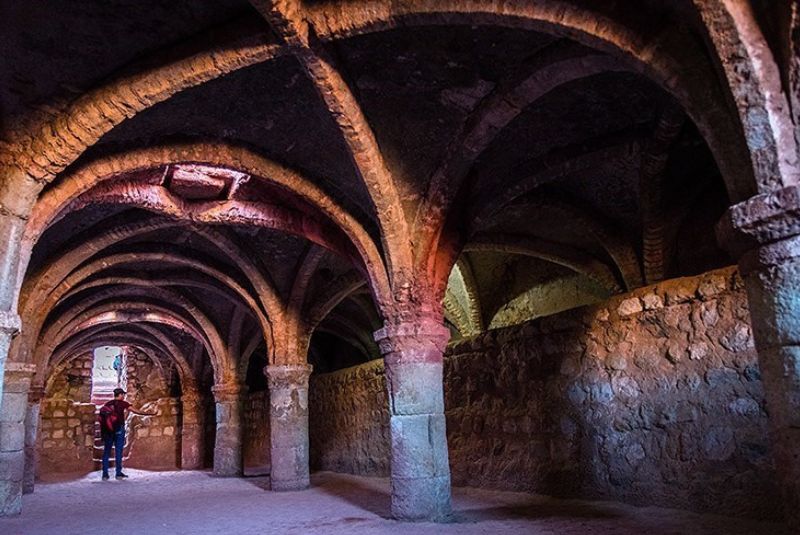
Exploring Hormuz Portuguese Castle requires a few essential tools and equipment to ensure a comfortable and enjoyable visit. Given the island's hot and sunny climate, it's advisable to bring along items such as sunscreen, sunglasses, a hat or cap to shield yourself from the sun's rays. Comfortable walking shoes are also recommended as you may need to navigate uneven terrain around the castle grounds.
Visitors to Hormuz Portuguese Castle should take note of the visiting hours, which typically run from eight in the morning to five in the afternoon. While exploring the castle, visitors are required to purchase a ticket, the price of which may vary depending on factors such as age and nationality. It's advisable to check with local authorities or tourism offices for the most up-to-date information on ticket prices.
The best time to visit Hormuz Portuguese Castle is during the autumn and winter months when the weather is milder and more conducive to outdoor exploration. During these seasons, temperatures are cooler, making it more comfortable to explore the castle's grounds and appreciate its historical significance. Additionally, visiting during the off-peak tourist season may offer a quieter and more tranquil experience, allowing visitors to fully immerse themselves in the castle's rich history and architectural marvels.
| Suggestion: Persian Gulf Islands - A Traveler's Guide to Iran's Coastal
Hormuz Portuguese Castle Nearby Attractions
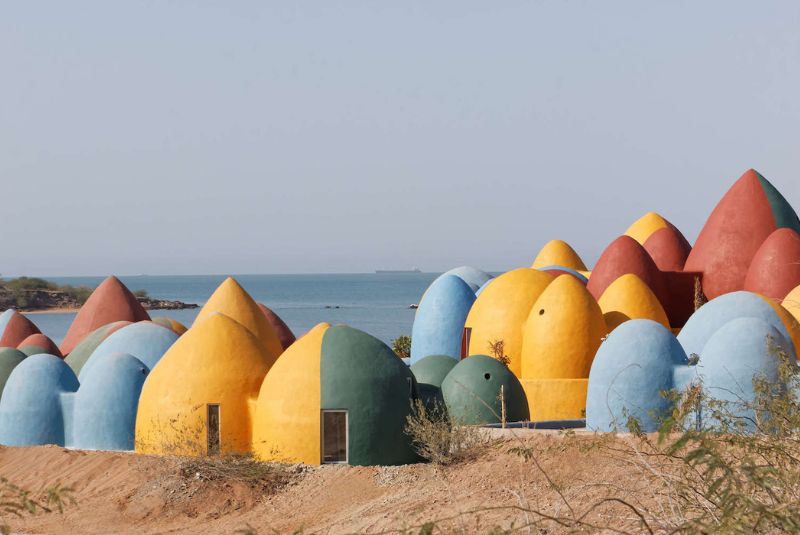
In addition to Hormuz Portuguese Castle, Hormuz Island boasts a wealth of captivating attractions waiting to be explored. One such attraction is the Valley of Statues, a geological wonderland characterized by unique rock formations sculpted by wind and water erosion over centuries. As visitors traverse the valley's pathways, they're treated to a mesmerizing display of stone sculptures that seem to defy gravity, creating an otherworldly ambiance.
Another must-visit site near the castle is the Salt Goddess Cave, also known as Tabarzan Salt Valley. This natural marvel features colorful hills and mountains formed by layers of salt deposits, offering a surreal landscape that's both enchanting and mysterious. Inside the cave, visitors can marvel at the intricate patterns and formations created by centuries of geological processes, providing a glimpse into the island's fascinating natural history.
Beyond these attractions, Hormuz Island offers additional sights worth exploring. Visitors can immerse themselves in the vibrant hues of Rainbow Valley, stroll along the pristine shores of Red Beach, or marvel at the breathtaking views from Sunset Cliff. For those interested in the island's cultural heritage, a visit to Dr. Nadalian's private museum provides insight into the native culture and traditions of this enchanting region. With its diverse array of attractions, Hormuz Island promises a memorable experience for travelers seeking adventure and discovery.
| Related: Hormuz Valley of the Statues + Photos
Finally!
The Hormuz Portuguese Castle stands as a testament to centuries of history, from its construction during the Safavid era to its strategic significance during the Portuguese colonization. Its architectural marvels, including thick walls and towering towers, offer a glimpse into the past, while its historical importance highlights its role in shaping the region's destiny. As a must-visit destination for history enthusiasts and tourists alike, the castle invites visitors to delve into its rich heritage, explore its fascinating architecture, and experience the allure of its ancient walls, making it an unforgettable journey through time on Hormuz Island.
Share your story!
Comment below and let us know about your Experience.
Your story inspires others!


Comment
Leave a Comment